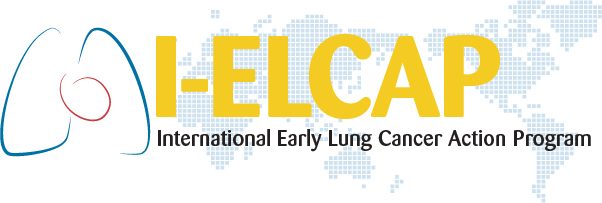Previous Meetings
The 16th International Conference on Screening for Lung Cancer
Friday, April 20, 2007 to Sunday, April 22, 2007
Weill Medical College of Cornell University
New York, NY
United States
Agenda: 16th Conference Agenda
Mission:
The broadest mission of these Conferences is the collective pursuit of understanding of the issues surrounding screening for lung cancer, the main subissues being early diagnosis and early intervention. Any given Conference focuses on issues that are particularly topical at the time, including updates of research on and development pertaining to screening for lung cancer and related topics.
Initially the focus was on diagnostic research, leading to updates of the regimen of screening and understanding of its performance characteristics. Recent prognostic research has focused on the effectiveness of lobectomy as the treatment of Stage I cases diagnosed as a result of CT screening as well as concerns about lung-sparing treatments. The ultimate goal of the I-ELCAP collaboration has been, and is, to develop the required individualized knowledge base for decision-making by persons considering the screening.
This Conference will focus on understanding research on screening for a cancer and the criticisms of the I-ELCAP approach. It will also focus on information that becomes available as a byproduct of screening, concerning the presence of emphysema, coronary artery calcifications, and non-imaging biomarkers that are useful for diagnostic and prognostic purposes.
Consensus Statement:
This conference focused on the long-term post-diagnostic follow-up results in the I-ELCAP collaboration and addressed the criticisms in a question and answer session. The criticisms included incomplete follow-up of the cohort, potential biases of the results, use of survival as an endpoint, the lack of a comparison group, and potential harms. Many of these were addressed in the response to the letters to the editor published on February 15th, 2007 in the New England Journal of Medicine. In this question and answer session, it was again stated that all individuals enrolled in the screening program were followed for 18 months after the last screening to determine whether they had been diagnosed with lung cancer in the interim, that the focus in I-ELCAP is on curability rates among participants undergoing early versus delayed or no treatment and that this comparison does not have lead time bias. In I-ELCAP, patients with Stage I lung cancer who had timely resection were compared with those who had delayed or no treatment. In all screening studies, randomized or not randomized, patients with cancer identified in the baseline round typically have more slower-growing cancers than those in repeat rounds (called length-bias), but those patients whose cancer is identified in repeat rounds of screening are found typically earlier in their natural course than those identified in the baseline round. To address length-bias it is important to report baseline results separately from repeat results. The potential harms in terms of unnecessary biopsies and surgery were addressed. When biopsy is recommended by the I-ELCAP protocol, 92% have resulted in a diagnosis of malignancy. Further, no lobectomy for benign disease has been performed and the surgical mortality rate in I-ELCAP was 0.5%, consistent with the rate of the recently reported cooperative surgical study.
As usual, updates on developments in the I-ELCAP network were presented, including preliminary results of the Cytology Panel review and a summary of the information that can be obtained from low-dose CT scans as to the extent of emphysema and chronic bronchitis. Potential biomarkers of lung cancer risk, obtained either from sputum cytology or blood, are being developed which might provide additional information on an individual’s risk of lung cancer. Once diagnosed with lung cancer, useful prognostic information was provided by biomarkers obtained from the surgical specimen and this information can be used to guide further treatment. The Nancy Terner Behrman Lecture focused on inflammation as a common pathway for the development of lung cancer and cardiovascular disease, highlighting opportunities for joint strategies of investigations for these diseases.
Three workshops were held. One addressed options for further evaluation of the effectiveness of screening for a cancer beyond what had already been demonstrated. One option was to pool data from ongoing CT screening trials to provide for an even larger randomized control trial with mortality reduction as the endpoint. The other option was to determine the number of deaths from lung cancer in a comparable unscreened cohort to predict the expected number of deaths in I- ELCAP in the absence of screening. Of particular importance when considering the mortality rates is the focus on the pattern of these rates over time to better understand when, after baseline screening, the maximum reduction is seen.
Another workshop addressed assessment of chronic obstructive pulmonary disease. The principal issue centered on the challenge to develop and calibrate visual assessment of emphysema on low-dose CT scans to provide for reliable and reproducible information. It was recommended that an emphysema reference database be developed and that a special interest group within I-ELCAP be formed to develop objective criteria of emphysema and document findings on CT images notably in regard to the degree and distribution of emphysema.
The smoking cessation workshop provided training for study coordinators of the institutions participating in the Legacy Screening and Smoking Cessation Trial. In this study current smokers are provided a baseline CT scan and then randomly assigned to one of two smoking cessation arms, a usual care arm or a more intensive care arm. The usual care arm provides information about the benefit of smoking cessation while the more intensive arm provides additional personalized information to both the screenee and the referring physician.
Scientific presentations and poster presentations provided new insights on various research opportunities in diagnosis and treatment of early lung cancer.
